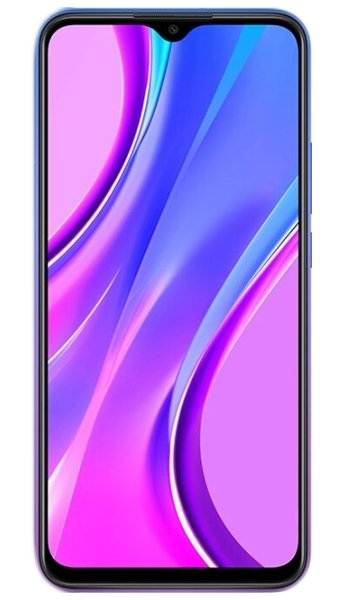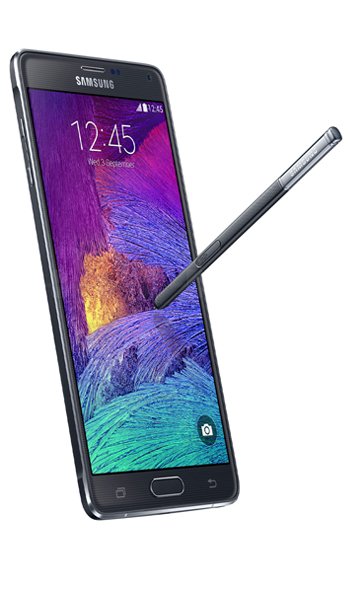Xiaomi Redmi 9 vs Samsung Galaxy Note 4 Comparison and Differences
Smartphone 1

Xiaomi Redmi 9
Smartphone 2

Samsung Galaxy Note 4
Smartphone 3
Xiaomi Redmi 9 or Samsung Galaxy Note 4 Specs Comparison
or
 Common specs
Common specs
| Brand and model | Xiaomi Redmi 9 | Samsung Galaxy Note 4 | |
| Rating | (+0) | (+0) | |
| Release date | 2020, June 10 | 2014, September | |
| Dimensions (HxWxD) | 163.3 x 77 x 9.1 mm | 6.43 x 6.43 x 3.03 in | 153.5 x 78.6 x 8.5 mm | 6.04 x 6.04 x 3.09 in | |
| Weight | 198 g | 6.98 oz | 176 g | 6.21 oz | |
| Body Build | Glass front (Gorilla Glass 3), plastic back, plastic frame | Front glass, aluminum frame, plastic back | |
| Case | buy from Amazon | buy from Amazon | |
| Colors | Carbon Gray, Sunset Purple, Ocean Green, Pink/Blue | Frosted white, Charcoal black, Bronze Gold, Blossom Pink | |
| Battery | 5020 mAh, Non-removable Li-Po | 3220 mAh, Removable Li-Ion | |
| Battery life |
Talking time - Up to 20 h (3G) Music play - Up to 82 h |
||
| Approximate price | $ 130 | 350 EUR | |
| Check price | from Amazon | from Amazon |
 Screen
Screen
| Technology | IPS LCD | Super AMOLED | |
| Touchscreen | capacitive touchscreen | capacitive touchscreen | |
| Display colors | 16M | 16M | |
| Screen size | 6.53" in | 5.7" in | |
| Screen area | 104.7 cm2 | 88.5 cm2 | |
| Screen format | 19.5:9 (height:width) | 16:9 (height:width) | |
| Screen to body ratio | 83.2% | 73.4% | |
| Screen resolution | 1080 x 2340 px | 1440 x 2560 px | |
| Screen PPI /points per inch/ | 395 PPI | 518 PPI | |
| Screen protection | Corning Gorilla Glass 3 | Corning Gorilla Glass 4 | |
| Other specs | - 400 nits typ. brightness | ||
| Screen protector | buy from Amazon | buy from Amazon |
 Camera and Video
Camera and Video
| Rear camera, main | 13 MP, Quad | 16 MP, Single | |
| Camera specs | -13 MP, f/2.2, 28mm (wide), 1/3.1'', 1.12µm, PDAF -8 MP, f/2.2, 118° (ultrawide), 1/4.0'', 1.12µm -5 MP, f/2.4, (macro) -2 MP, f/2.4, (depth) |
-16 MP, f/2.2, 31mm (standard), 1/2.6'', 1.12µm, OIS, AF | |
| Functions | LED flash, HDR, panorama | LED flash, panorama, HDR | |
| Video | 1080p@30fps | 2160p@30fps, 1080p@60fps, dual-video rec. | |
| Front camera, selfie | 8 MP, Single | 3.7 MP, Single | |
| Specifications | 8 MP, f/2.0, 27mm (wide) | 3.7 MP, f/1.9, 22mm (wide) | |
| Functions | HDR | HDR | |
| Video | 1080p@30fps | 1440p@30fps |
 Performance
Performance
| Operating system - OS | Android 10, MIUI 12 | Android 4.4.4 (KitKat), upgradable to 6.0.1 (Marshmallow) | |
| Chipset | - Mediatek Helio G80 (12 nm) | - Exynos 5433 - Qualcomm APQ8084 Snapdragon 805 (28 nm) |
|
| CPU | - Octa-core (2x2.0 GHz Cortex-A75 & 6x1.8 GHz Cortex-A55) | - Quad-core 2.7 GHz Krait 450 - Snapdragon 805 -Octa-core (4x1.3 GHz Cortex-A53 & 4x1.9 GHz Cortex-A57) - Exynos 5433 |
|
| GPU | Mali-G52 MC2 | Adreno 420 (Snapdragon 805) Mali-T760 MP6 (Exynos 5433) |
|
| External memory | microSDXC (dedicated slot) | microSD, up to 256 GB (dedicated slot) | |
| Internal memory | 32GB 3GB RAM, 64GB 4GB RAM, 128GB 6GB RAM | 32 GB, 3 GB RAM |
 Benchmark
Benchmark
| Antutu 10 Total | 268890 | ||
| Antutu 10 CPU | 93652 | ||
| Antutu 10 GPU | 38433 | ||
| Antutu 10 Mem | 62918 | ||
| Antutu 10 UX | 93652 | ||
| Antutu 8 Total | 201917 | ||
| Antutu 7 Total | |||
| GeekBench 6 Single Core | 410 | ||
| GeekBench 6 Multi Core | 1295 | ||
| GeekBench 6 OpenCL | 1090 | ||
| GeekBench 6 Vulkan | 1074 | ||
| GeekBench 5 Single Core | 358 | ||
| GeekBench 5 Multi-Core | 1287 | ||
| GeekBench 4 Single Core | 973 | ||
| GeekBench 4 Multi-Core | 3223 | ||
| GeekBench 4 RenderScript | 2621 | ||
| GeekBench 4 Battery | 1038 |
 Communication and Connectivity
Communication and Connectivity
| SIM card | Dual SIM (Nano-SIM, dual stand-by) | Micro-SIM | |
| Network | GSM / HSPA / LTE | GSM / HSPA / LTE | |
| Bands | -2G - GSM 850 / 900 / 1800 / 1900 - SIM 1 & SIM 2 -3G - HSDPA 850 / 900 / 1700(AWS) / 1900 / 2100 -4G - 1, 2, 3, 4, 5, 7, 8, 20, 28, 38, 40, 41 |
-2G - GSM 850 / 900 / 1800 / 1900 -3G - HSDPA 850 / 900 / 1900 / 2100 HSDPA 850 / 1700 / 1900 / 2100 - N910W8 -4G - LTE band 1(2100), 2(1900), 3(1800), 4(1700/2100), 5(850), 7(2600), 8(900), 17(700), 20(800) - N910F, N910C LTE band 1(2100), 2(1900), 3(1800), 4(1700/2100), 5(850), 7(2600), 8(900), 28(700), 38(2600), 40(2300) - N910G LTE band 1(2100), 2(1900), 3(1800), 4(1700/2100), 5(850), 7(2600), 8(900), 12(700), 17(700) - N910W8 LTE band 1(2100), 2(1900), 3(1800), 4(1700/2100), 5(850), 7(2600), 8(900), 28(700) - N910U |
|
| Speed | HSPA 42.2/5.76 Mbps, LTE-A | HSPA 42.2/5.76 Mbps, LTE Cat4 150/50 Mbps (Exynos 5433)HSPA 42.2/5.76 Mbps, LTE-A Cat6 300/50 Mbps (Snapdragon 805) | |
| GPRS | Yes | Yes | |
| Edge | Yes | Yes | |
| Wi-Fi | Wi-Fi 802.11 b/g/n, Wi-Fi Direct, hotspot | Wi-Fi 802.11 a/b/g/n/ac, dual-band, Wi-Fi Direct, hotspot | |
| GPS | Yes, with A-GPS, GLONASS, BDS | Yes, with A-GPS, GLONASS, BDS | |
| NFC | Yes (market/region dependent) | Yes | |
| USB | 2.0, Type-C 1.0 reversible connector, USB On-The-Go | microUSB 2.0 (MHL 3 TV-out), USB Host | |
| Bluetooth | 5.0, A2DP, LE | 4.1, A2DP, EDR, LE | |
| Harmful irradiation |
SAR - 0.91 W/kg (head) 1.00 W/kg (body) SAR EU - 0.91 W/kg (head) 1.00 W/kg (body) |
SAR - 0.37 W/kg (head) 0.88 W/kg (body) SAR EU - 0.37 W/kg (head) 0.38 W/kg (body) |
 Music and Audio
Music and Audio
| Radio | Wireless FM radio | No | |
| Headphone jack | Yes | Yes | |
| Others | - 24-bit/192kHz audio -Active noise cancellation with dedicated mic |
 Other features
Other features
| Sensors | - Fingerprint (rear-mounted), accelerometer, proximity, compass , Infrared port | - Fingerprint (front-mounted), accelerometer, gyro, proximity, compass, barometer, gesture, UV, heart rate, SpO2 , Infrared port | |
| Other extras |
- Fast charging 18W |
- -ANT+ -S-Voice natural language commands and dictation -Air gestures --Stylus - Fast battery charging (Quick Charge 2.0) |
|
| Versions |
- Versions: N910F (Europe); N910K/N910L/N910S (Korea); N910C (Asia, Europe, South America); N910FD (United Arab Emirates); N910FQ (Turkey); N910H (Asia-Pacific); N910G (Singapore, India, Australia); N91 |
Reviews and Opinions on Xiaomi Redmi 9 and Samsung Galaxy Note 4
If you had to recommend one of these phones to a friend, which one would it be and why? Share your arguments using the Add Opinion button!
